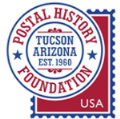
Past exhibits
Rotating exhibits in the Slusser Library
(To view the current rotating exhibit, click here.)
Past exhibits:
Pathway to the Pacific: The Creation of the Arizona Territory
On view in the Slusser Library from mid-October 2019-Sep 2023.

On March 23, 1 867, a letter from a soldier stationed at Fort Yuma came through the Tucson Post Office. It was addressed to Miss L.A. Tobey: Lydia Anna Tobey, daughter of Samuel Boyd and Sarah Fry Tobey, prominent Quakers in Providence, Rhode Island. The soldier was most likely her brother Thomas, who had
been excommunicated years before when he took up arms with the Union army to stop the abhorrent practice of slavery. Now he was in the Arizona Territory, an area that played a small but significant role in the Civil War. Arizona was on the path to the Pacific Ocean, which meant more convenient trade with China. During the war, the South tried (and for a short time, succeeded in) claiming Arizona for itself.
Through this little envelope, the oldest known to have been postmarked at the Tucson post office during the
Territorial period, take a trip through time and learn about the major steps towards the annexation of
Arizona into the United States.
Small Steps, Giant Leaps, and Lasting Memories: Celebrating the 1969 Moon Landing
On view in Slusser Library from July 2019-mid-October 2019.

The Postal History Foundation celebrates the 50th anniversary of Apollo 11 and the first lunar landing with the exhibit, Small Step
Everything’s a Story: a Celebration of Children’s Literature on Stamps

On view in Slusser Library from January 15, 2019-April 30, 2019.
Our stories are born with us and shaped by what we see, hear, do, and read. Some of our most memorable experiences and valuable lessons came from our childhood books.
Postal authorities around the world recognize the importance of children’s books to us and have celebrated some of the most beloved stories on postage stamps. The stamps presented in this exhibition were selected because they would be most familiar to our typical audience—but if you don’t see your favorite in the exhibit, why not find out if its story has ever continued onto a postage stamp?
The Wickenburg Murder Mystery

On view in Slusser Library from June 11-December 31, 2018.
On November 5, 1871, the stage from Prescott to San Francisco was ambushed just outside Wickenburg. Six people were killed in the attack; two escaped. White settlers from Prescott were blamed; Mexicans from Sonora were blamed; Yavapai from the Date Creek Reservation were blamed. Who really did it? The upcoming exhibit will explore the nearly 150-year-old mystery and examine the depiction of the event on one of the Cal Peters paintings that are on permanent display in the Slusser Library .
Prospectors & Postmen: Mail Delivery in the Boom Days of Mining

On view in Slusser Library from January 15-May 31, 2018
Most prospectors didn’t “strike it rich,” and some turned to other industries that supported others’ mining efforts. Camps and towns grew and spread out. Mercantile stores, saloons, restaurants, churches, and schools were established as the population grew. The most important of these industries, and which all the others were dependent on, was mail delivery.
“Prospectors and Postmen: Mail Delivery in the Boom Days of Mining” presents photographs, contemporaneous mail, and other documents to tell the story of early mail and freight transportation methods, with particular emphasis on Arizona. The exhibit includes information on the Colorado River steamboats, pack animals, wagons, coaches, buckboards, and “pony express” style horseback mail delivery.
The Pollinators

On view in Slusser Library from August 1-December 27, 2017
The Slusser Library joins in the celebration of the USPS’s August 3, 2017 stamp issue, “Protect the Pollinators” with an exhibit featuring philatelic bees, butterflies, hummingbirds, bats, and moths.
Pollinators are responsible for one-third of our food and drink and $20 BILLION (with a BEE) in products annually in the United States.


















































